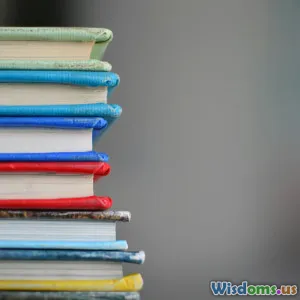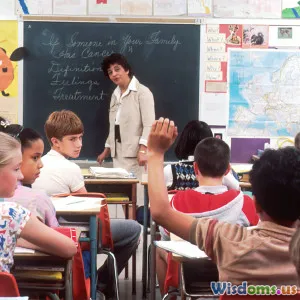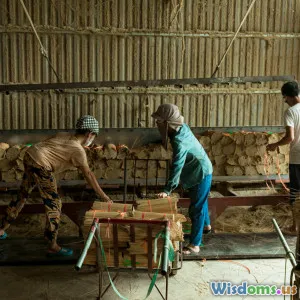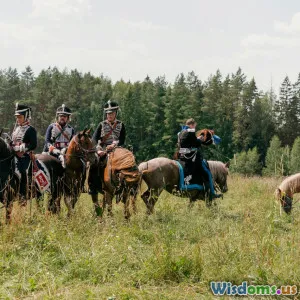
Seven Surprising Impacts Of Industrialization On School Curricula
9 min read Explore seven unexpected ways industrialization reshaped school curricula and education worldwide. (0 Reviews)
Seven Surprising Impacts Of Industrialization On School Curricula
Industrialization stands as one of the most transformative periods in human history, often associated with factories, machines, and urban expansion. However, beyond these tangible changes, there lies a less immediately visible yet equally profound impact: the reshaping of school curricula across the globe. Far from a simple timeline of educational reform, the industrial age reimagined what knowledge schools impart, how classrooms operate, and even the role of education in society.
This article delves deep into seven surprising ways industrialization influenced school curricula, challenging assumptions and revealing how our educational foundations were altered to meet the needs of an industrializing world.
1. The Rise of Practical and Vocational Skills
Industrialization created an unprecedented demand for skilled laborers who could operate machinery, understand technical specifications, and adapt to factory environments. This demand shifted educational priorities from strictly classical subjects like Latin and rhetoric to more practical skills.
Evidence in Curriculum Shifts
By the late 19th and early 20th centuries, many countries expanded vocational education. For example, Germany pioneered the apprenticeship model integrated with formal schooling, emphasizing hands-on training. Meanwhile, in the United States, schools started offering woodshop, mechanical drawing, and typing classes aimed at equipping students with marketable skills.
As historian Harold Perkin observed, this reflected the “new education order” tailored for an industrial society’s needs, marking a migration from elitist education toward mass education with skills directly linked to employment.
2. Standardization and Uniformity
Industrial mass production thrived on standardization—interchangeable parts, standardized measurements, and routine processes. Education mirrored this by moving towards uniform curricula designed to efficiently prepare masses of children for factory jobs and bureaucratic roles.
Impact on School Systems
This standardization encouraged the development of age-based grade levels and a common syllabus to ensure consistent delivery of content. It led to the widespread adoption of standardized testing, which journalists of the era often described as aiming to transform education into a ‘factory-like assembly line.’
While criticized for limiting creativity, this standardization sought to make education accessible and quantifiable, increasing literacy and numeracy rates crucial for an industrial labor force.
3. Emphasis on Science and Mathematics
Industrial societies thrived on innovation, engineering, and scientific discovery. Consequently, school curricula began to prioritize subjects like physics, chemistry, and advanced mathematics.
Case Study: The Influence of the Second Industrial Revolution
The Second Industrial Revolution (late 19th to early 20th century) introduced steel manufacturing, electricity, and chemical industries, which demanded technically literate citizens.
Educators such as John Dewey advocated for integrating scientific inquiry into education as a means to foster critical thinking relevant to a rapidly changing world. Schools implemented laboratory sciences, calculated mathematics, and technical drawing to prepare students for roles in emerging industries.
Data from the era shows a marked increase in course offerings related to applied sciences, reflecting the intertwined growth of industry and schooling.
4. Introduction of Discipline and Time Management
Factories ran on schedules, with rhythms of shifts and punctuality crucial for production efficiency. Education absorbed these values by instilling discipline and regimented time management in the classroom.
The Birth of the School Bell
Industrialization introduced the familiar school bell, signaling transitions between subjects and breaks. This emulated factory whistles, acclimating children to a structured, timed day.
Pedagogically, this led to an environment where attendance, punctuality, and compliance became as important as academic content—skills deemed essential for future industrial workers.
Psychologists and educational theorists have since critiqued this for limiting spontaneous creativity, though its impact on societal punctuality norms remains significant.
5. Educational Expansion and Literacy for the Masses
Industrial progress necessitated a literate, numerate population capable of following manuals, contracts, and instructions.
Expansion of Public Schooling
Governments expanded compulsory education laws, moving education from the elite domain to a universal right. UNESCO reports that literacy rates worldwide surged during and after the industrial era, largely thanks to broadened curricula aligned with industrial society’s demands.
The curricula often introduced civic education, reading comprehension, basic arithmetic, and writing skills vital for participating in industrial economies and democratic governance.
This democratization of education set the stage for modern public schooling systems with curricula designed for inclusion and workforce readiness.
6. Marginalization of Classical and Artistic Subjects
While the classical focus on Greek, Latin, and philosophy dominated pre-industrial education, industrialization shifted priorities drastically. Artistic, philosophical, and classical languages often faced marginalization in favor of science, math, and technical subjects.
The Trade-Off for Progress
Curricula relegated the humanities to electives or diminished their presence, as society sought efficient workforce training over holistic liberal arts education. This trend was evident in nations rapidly industrializing, such as Britain and the U.S., where factory needs dictated educational content.
Though debates continue, this shift highlights a core tension in education between specialization for economic roles and broader cultural literacy.
7. The Concept of Education as Social Control
Industrialization brought urbanization, new social classes, and challenges such as worker unrest and poverty. Education began to function partly as a tool for social control, aiming to produce compliant workers and respectful citizens.
Historical Interpretations
Scholars like Samuel Bowles and Herbert Gintis argue that industrial schooling inculcated values of obedience, punctuality, and acceptance of hierarchy, mirroring factory labor cultures.
Curricula incorporated moral education and civics to promote social cohesion, while suppressing dissent to stabilize industrial capitalist societies.
Though controversial, this role of education deepened during industrialization as societies faced complex social transformations.
Conclusion
The impact of industrialization on school curricula was multifaceted and profound, reaching far beyond simple subject matter shifts. It entrenched practical skills, science, and discipline into education, standardized learning processes, broadened access to schooling, and reshaped education’s societal role.
Understanding these seven surprising impacts illuminates how industrial history continues to influence modern education. It challenges educators and policymakers today to reflect on how curricula can adapt to evolving societal needs without repeating past constraints—balancing technical competence with creativity, inclusion, and critical thinking.
As we face new technological revolutions, such as digital and AI advancement, lessons from the industrial era remind us that curricula must evolve thoughtfully, preparing students not only for jobs but for active, informed lives in complex societies.
Rate the Post
User Reviews
Popular Posts




















